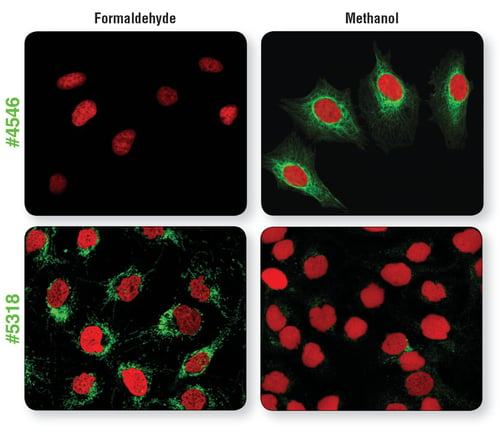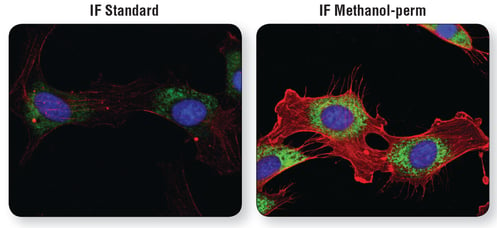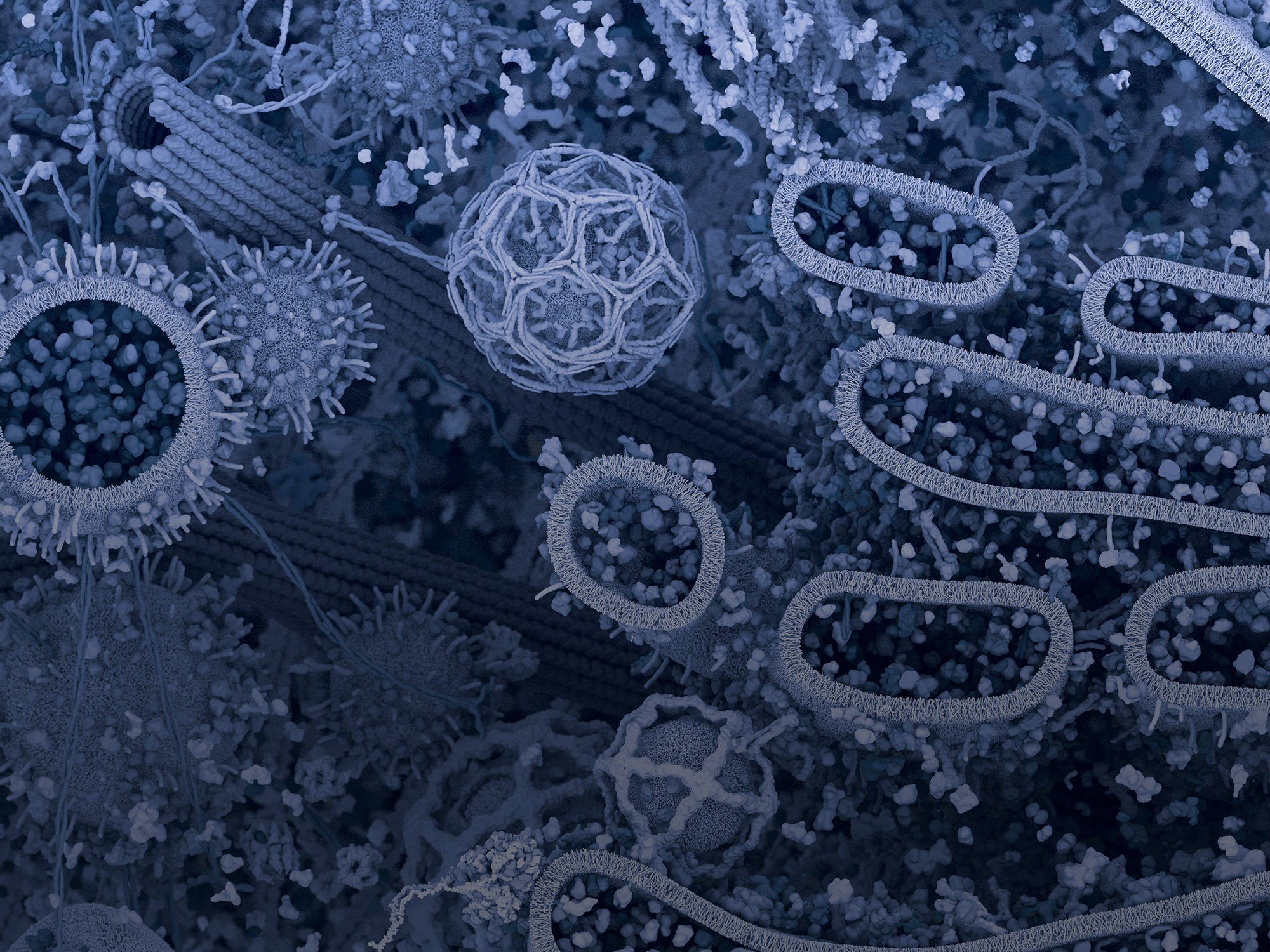Part Three of a four-part series on successful immunofluorescence. Read Part 1: The Importance of Validation and Part 2: Experimental Controls.
—
The performance of an antibody is a crucial determinant in getting reliable immunofluorescence (IF) results. Equally important is the preparation of the biological sample —the cells or tissue used in your experiments—before any antibodies are introduced. The fixation and permeabilization of your samples are key steps that can determine your experiment’s failure or success. The ideal fixative preserves a “life-like” snapshot while quickly stopping the degradative process of autolysis by crosslinking and inhibiting endogenous enzymes.
CST scientists test different methods during antibody development to provide you with the recommended fixation and permeabilization protocol best suited for each antibody, so you don't have to guess.
This post provides examples of how different antibodies perform at their best using different protocols.
Choosing a Fixative: Formaldehyde vs Alcohol Fixation
Can't see the above video? Click here to watch.
Aldehyde-based fixatives such as formaldehyde, formalin (a mixture of dissolved formaldehyde with a lower percentage of methanol), and glutaraldehyde are used most commonly. For most antibodies, CST recommends fixation with 4% formaldehyde, which you can learn more about in our Immunofluorescence Protocol with Formaldehyde Fixation. Aldehydes react with and crosslink cellular proteins, stabilizing and hardening the sample. Aldehydes cross the plasma membrane and fix soluble proteins better than alcohols, but some targets can lose their antigenicity with aldehyde crosslinking.
Additional Resource: Visit our Protocols page to see the fixation and permeabilization methods CST recommends for various applications.
Dehydrating/denaturing fixatives, such as methanol, displace water around cellular macromolecules, resulting in their denaturation and precipitation in situ. Denaturation of the target protein may expose normally buried epitopes, making this approach advantageous for some antibodies. However, dehydrating fixatives are less suited for soluble targets and modification state-specific antibodies such as phospho-antibodies. Check the product datasheet for the optimal fixation method.
Side-by-side comparison of HeLa cells fixed using different fixation protocols shows that Keratin 8/18 (C51) Mouse mAb #4546 works best with methanol fixation. In contrast, AIF (D39D2) XP® Rabbit mAb #5318 works best with formaldehyde fixation.

Confocal IF analysis of HeLa cells fixed with formaldehyde (left) or methanol (right) using Keratin 8/18 (C51) Mouse mAb #4546 (green, upper row) or AIF (D39D2) XP® Rabbit mAb #5318 (green, lower row). Red = Propidium Iodide (PI)/RNase Staining Solution #4087.
Fixation and Permeabilization Conditions for Multiplexing
If you are multiplexing with antibodies that call for different CST protocols (IF standard vs IF methanol fixation or IF methanol-perm), you may need to prioritize which antibody to use at its optimal conditions. Performing a small-scale test run to compare different protocols may be informative before scaling up your experiments.
Permeabilization: Selecting Detergents or Alcohols
If a crosslinking fixative is used, the plasma membrane will still be intact, making intracellular targets inaccessible to antibodies. Therefore, permeabilization should be performed after crosslinking fixation unless your antibodies recognize extracellular epitopes. Our IF Standard Protocol incorporates Triton X-100 permeabilization after fixation with the blocking step (see next section). Triton and other detergents such as NP-40, TWEEN, Saponin, Digitonin, and DOTMAC remove different molecules from cellular membranes and create variable “pore” sizes to allow antibody access.
Alternatively, alcohol permeabilization with ethanol or methanol may be performed after the fixation step. This method combines the rapid fixation of crosslinking fixatives with intermediate denaturation. This can improve signal for certain targets, particularly those associated with organelles or the cytoskeleton. Methanol permeabilization improves performance of some antibodies, as shown below.

PDI (C81H6) Rabbit mAb #3501 and ß-Actin (8H10D10) Mouse mAb #3700 work best with methanol permeabilization. Confocal IF analysis of NIH/3T3 cells, permeabilized with 0.3%Triton® X-100 (left) or methanol (right), using #3501 (green) and #3700 (red). Blue pseudocolor = DRAQ5® #4084 (fluorescent DNA dye).
As with fixation, the optimal permeabilization method varies depending on the antibody. Consult our product datasheet for the recommended method, or contact CST if you have questions.
Best Practices for Successful Immunofluorescence Experiments
For more IF staining tips, download our comprehensive Guide for Successful Immunofluorescence, which has all of the protocols mentioned in this post plus more helpful tips, below:
Have you ever wondered how we come up with our recommended antibody dilutions? Read the final post in this series Part 4: Antibody Dilution and Incubation Conditions.
Additional Resources:
For more tips for achieving successful immunofluorescence, check out the blogs below:
- 5 Steps to Publication-Worthy IF Images
- 3 Questions to ask before starting your IF experiment
- Fluorescent Staining Using Multiple Antibodies
Read the complete Successful Immunofluorescence Series:
- Part 1: Successful Immunofluorescence: The Importance of Validation
- Part 2: Successful Immunofluorescence: Experimental Controls
- Part 3: Successful Immunofluorescence: Fixation and Permeabilization
- Part 4: Successful Immunofluorescence: Antibody Dilution and Incubation Conditions



